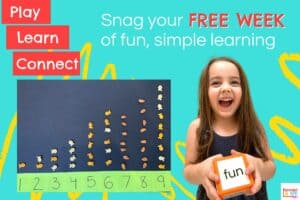
You've found the treasure trove of Letter V worksheets, here in this most unusual place.
Why is it unusual? Well, I'm not the biggest fan of worksheets for teaching new information, but I also know that worksheets work really well to reinforce skills like letter writing and allow kids to practice skills like letter sound correspondence.
So let this be the first of many free worksheets in the alphabet series, created by a kindergarten teacher for parents and other teachers.
These letter V worksheets are divided into 4 categories:
*As an Amazon affiliate, I may make a tiny commission from any purchase that you make through links on my site to help with the upkeep of these free resources. Thank you in advance.
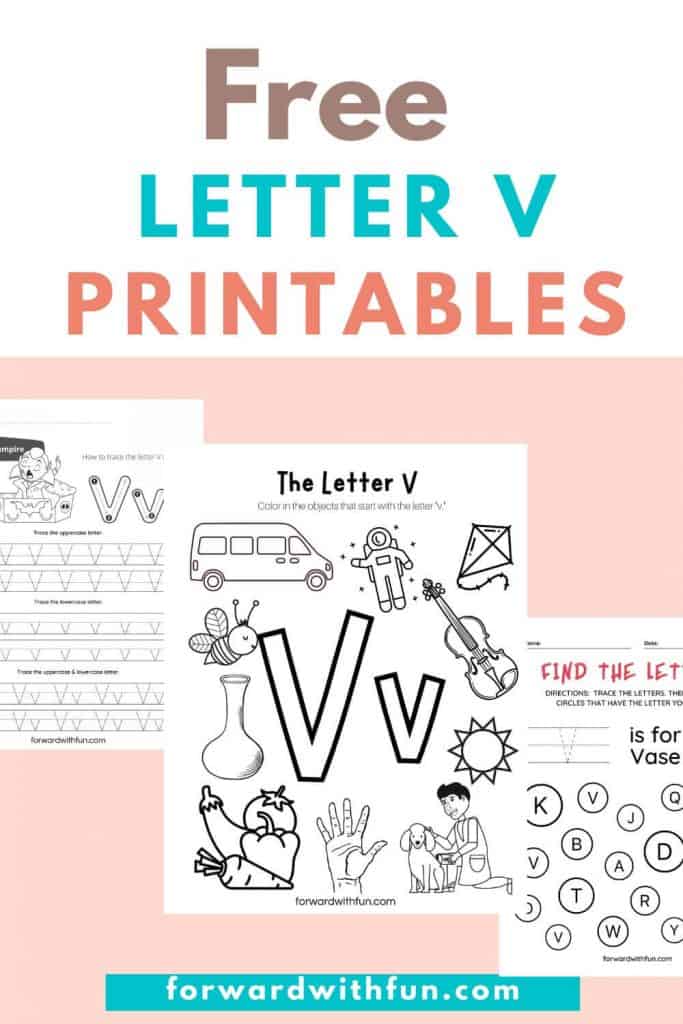
When kids are first learning the names of letters, they can easily mix them up. Since they all are a series of squiggles and lines, and the names are so abstract, it's easy to see why.
These printables can be colored, put stickers onto, or dabbed with these Do-a-dot dabbers. Those are the only ones I trust, after being in the dabbing game for over 13 years now.
Reinforce the phonetic piece behind letter learning. What sound does the letter V make? Which pictures do and do not start with that /v/ sound? Beginning sound isolation is the skill we are working on Easy Phoneme Isolation Activities
Beginning Sound Isolation is the skill of identifying the first sound in a word, and it's a very important early reading skill. This is what these two worksheets focus on.
These are probably the most helpful worksheets to have, tracing and writing worksheets. There really is nothing that can replace the pencil to paper tasks kids must learn to become writers.
If your children are struggling with pencil to paper tasks, and you notice their writing is really light, shaky, or messy, they likely have low fine motor tone. Here are some play based activities you can do to develop those fine motor skills.

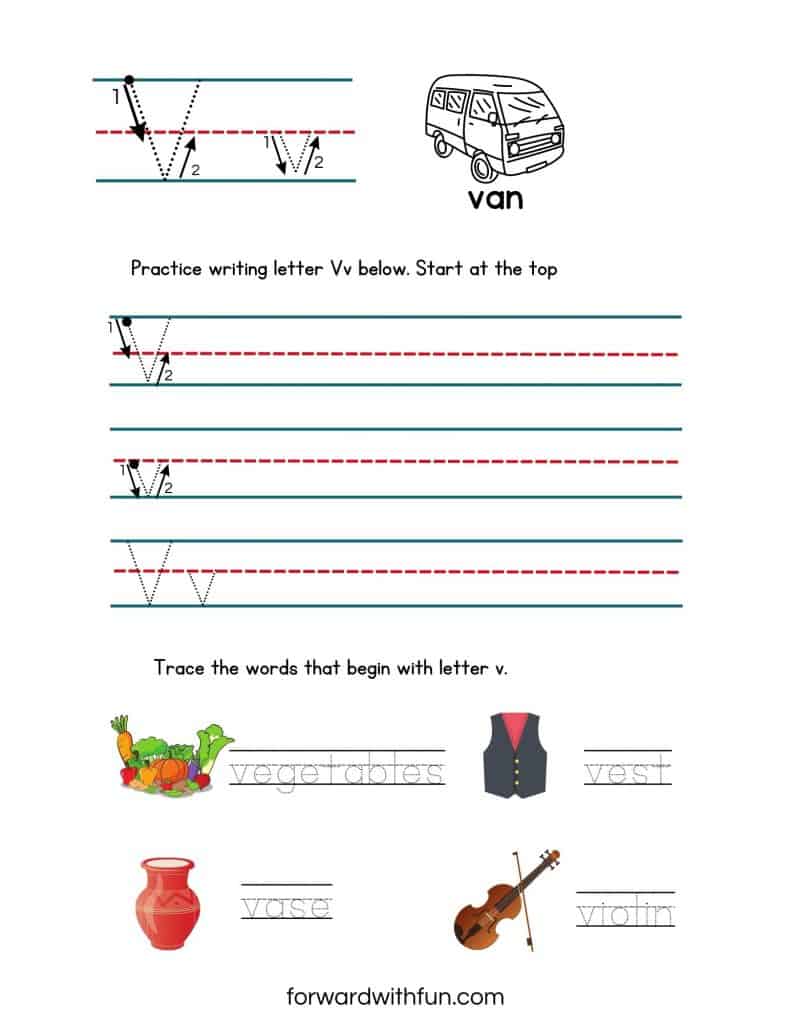
This printable book reinforces the letter V sound as children read about lots of words that start with V. Bonus! When kids read this book they're also practicing concepts of print and sight words. As you can see the sight words used in this book are "is" and "for."
Teach your preschooler their letters in 4 unique ways with this giant packet of alphabet playdough mats! No email subscription required. Just print and play!
*As an Amazon Associate I may get a small commission if you decide to purchase from my links. Thank you.
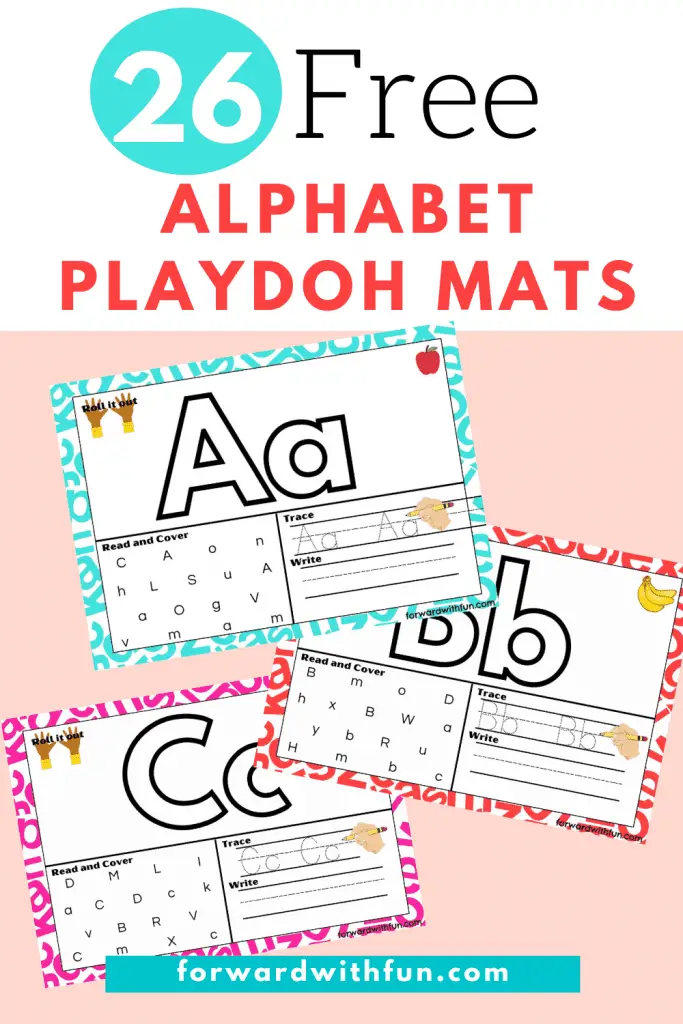
The MAJOR difference is that they promote letter learning in 4 different modalities catering to many learning styles:
By playing to learn with these alphabet mats kids are exposed to letters through art, reading, and writing.
The more exposure a child has with letters the more likely they are to remember the letter. But we aren't just going to practice letter recognition; we are also building their ability to independently write each letter!
Also (updated version!), there is a little picture of a word that begins with that letter in the top right hand corner. So there is a phonics element to each mat as well!
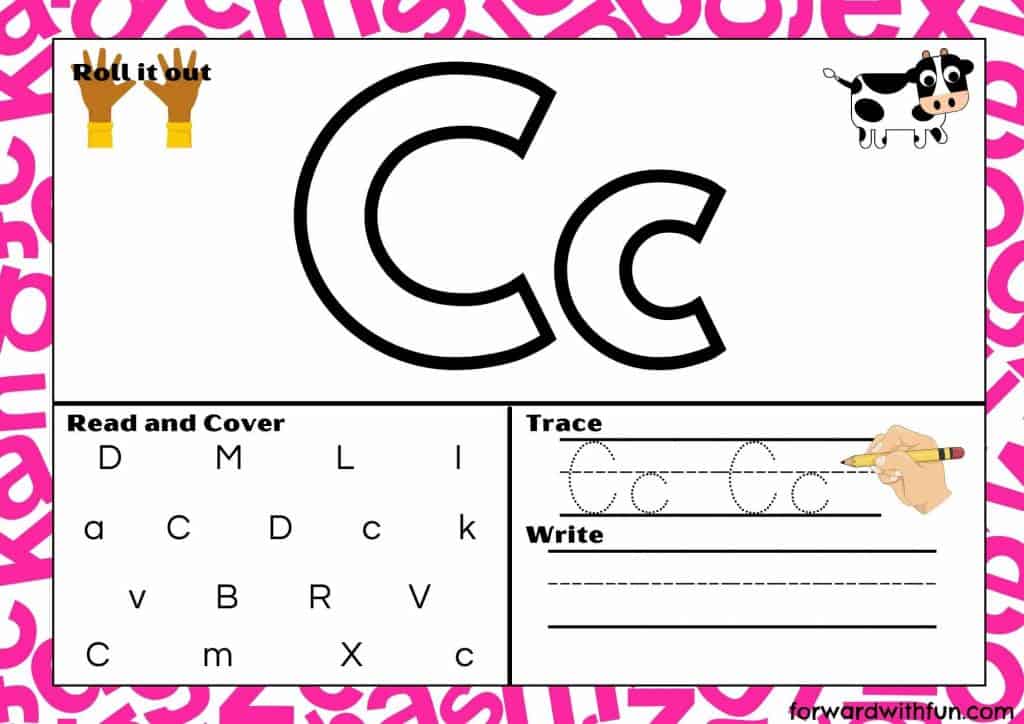
Side note: it drives me crazy to see uncommon sounds for each letter like giraffe for G when we teach that G says /g/ as in golf. All the pictures on these printable alphabet mats match the most common phonetic sound for each letter!
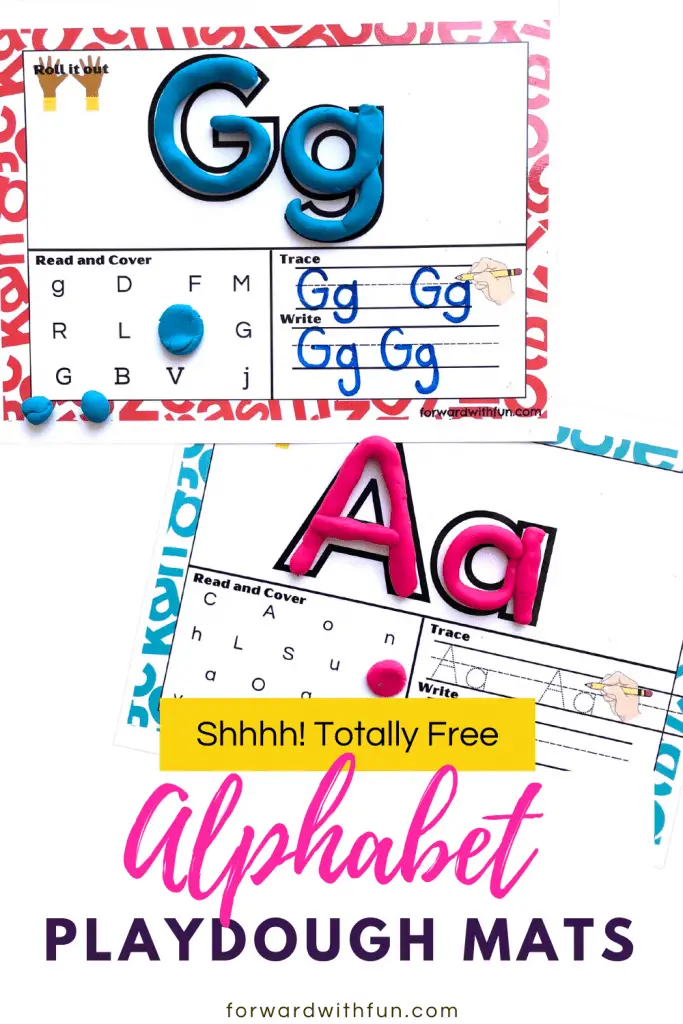
The benefits are HUGE and three fold.
Using playdough:
As children learn to write, they don't just need to memorize the strokes it takes to form letters. There is so much more.
Writing requires:
With the alphabet playdough mats, kids will roll and shape playdough as well as make it into small balls to smush onto the correct letter in the "Read and Cover" section.
This very intentional kind of play strengthens hands, finger, and wrist muscles required to write properly!
These beautiful letter learning mats are super easy to use!
When writing on the mats, you can use any dry erase markers. Provide your preschooler or kindergartner with a tissue or small cloth to erase once they are done.
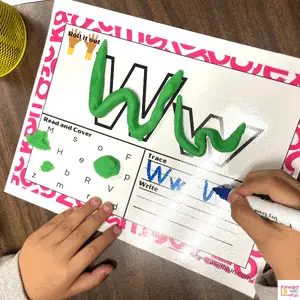
I find that laminating the alphabet playdough mats works makes them last longer, and I found a very affordable and effective laminator on Amazon (stays between $25-$30). I've used it for 3 years and it's still works perfectly. I'll also link the laminating sheets and dry erase markers I love best.
A KinderReady Summer is your one stop shop for fun activities that target the exact skills kids need as they enter kindergarten.
Each week for 8 weeks, you'll get 5 simple pre-planned activities sent to your inbox. All you have to do is read the instructions.
The focus of A KinderReady Summer is to target the very important skills that come just before reading, writing, and doing arithmetic.
-letter identification, capital and lowercase
-letter sounds
-beginning sounds
-shape names and attributes
-number identification to 10
-counting with one to one correspondence
-pattern completion and creation
-name writing
-fine motor development
Hands on learning is my secret to teaching reading so kids are never bored!
I NEVER use workbooks or worksheets.
When I say "hands on learning," I mean any kind of learning where your child is actively participating in creating new knowledge or solving a problem. This is also called learning by doing. From your own childhood, did you ever really learn something from a worksheet? I remember the projects, the games, the activities that got me and my classmates up and moving, creating, and solving problems.
Hidden Object is a hands on learning game that combines reading skills with a fun, element of surprise.
What you'll need-
On the Post-its, write the letters your child is learning. If you're child is just starting to recognize letters, I recommend starting with the letters of their name.
In this version, children will either say the letter name or the letter sounds as they lift each bowl on the hunt for the hidden object.

If your child has moved into reading, try sight words or CVC words in a particular word family (on example is the AT word family with words like cat, rat, bat, sat, etc).
Another idea would be to include words that have a new sound they've just learning like digraphs: sh, wh, th, and ch.

This simple hands on game can be used for so many different skills: letter sounds, letter identification, sight words, CVC words, digraphs, etc.
In this instance, Big Sis was practicing reading CVC words (consonant vowel consonant words) that had different vowels in the middle. If I notice her struggling with a specific vowel or letter sound, I would put more words with those sounds on the Post its.

Whenever I discuss early literacy skills like reading CVC words and sight words, I want to reinforce that all the games and wonderful activities are only part of the reading puzzle. The biggest thing you can do for your child to have success with reading from an early age is read to them everyday.
Like teaching your child through hands on learning games? Want to teach you 4-5 year old to read using hands on learning? Check out The Fun Club! Subscribe for a free week of activities right now!

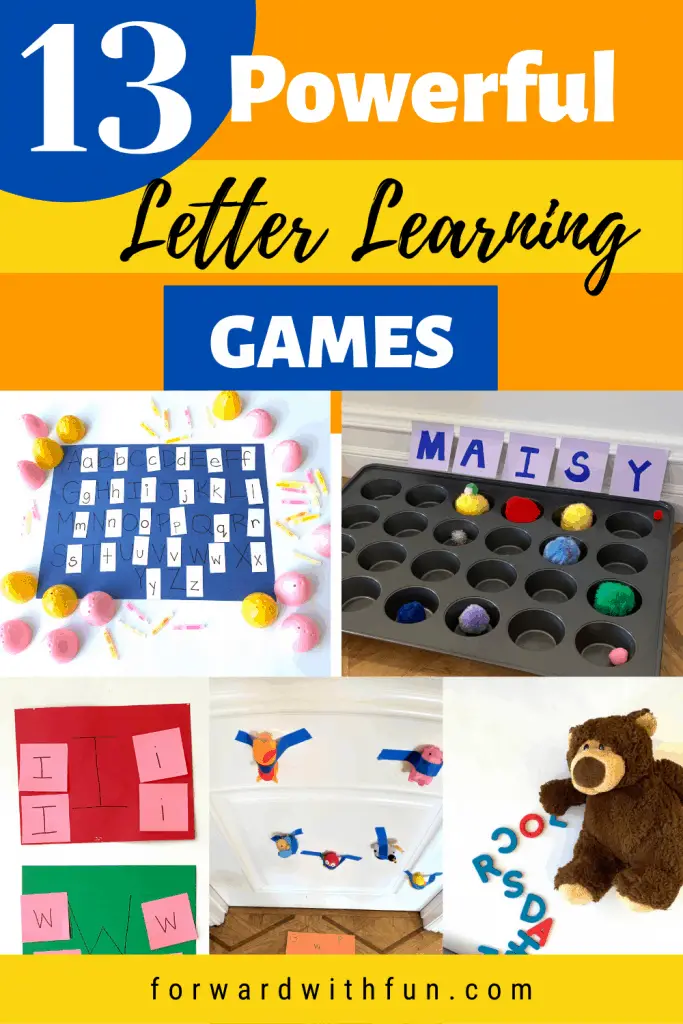
Learning letters is the first step in learning to read. Children in preschool and kindergarten largely focus on letter identification and letter sounds.
While some kids are naturally inclined to learn letters from a young age, others take longer and that's okay.
My mission is to making learning letters and how to read fun and hands on. So if you're looking for a letter sounds worksheet or some alphabet flashcards, this isn't the place.
Instead I'm going to show you my most favorite, hands-on letter learning games so that your kid is just as excited about the alphabet as I am (that's super excited...ahem...kindergarten teacher).
There is not one correct order of teaching letters but instead many different ways to choose which letters to focus on first.
No matter what order of teaching letters you choose, I would recommend only working on 5-7 new letters at a time to avoid overwhelming your child. They'll need lots of repetition for those letters to stick in their minds, so always add in some letters they already know when you're playing these games.
All you need are some Post-its, a fly swatter (or a hand), and you're ready to go. Call out letter names or letter sounds and have your little one jump and swat the letters. You can use numbers too!
Hide toys around the house or even just on a door with blue tape. Invite your child to play by telling them that the Toy Thief has stolen their precious toys and they, and they alone must rescue them.
At the rescue station, toys must be matched with their beginning sound, reinforcing the letter sounds while also working on phonemic awareness!
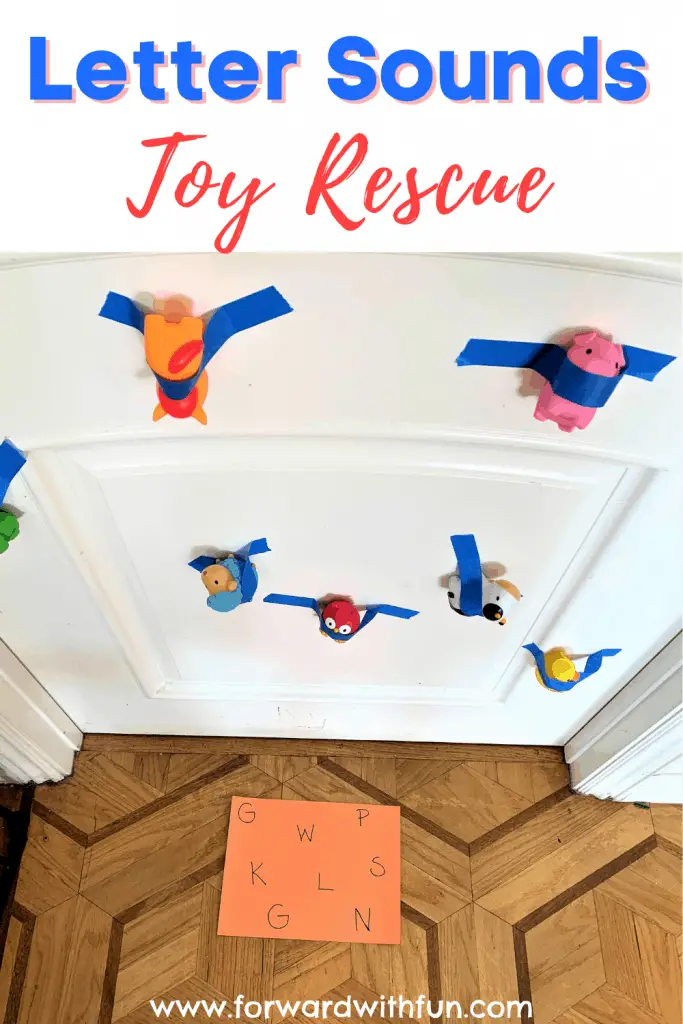
Got salad tongs? Blue tape? Any container? Combine with letters for this fun challenge!
It's simple, really...call out the letter sound and have your child pluck the corresponding letter from the container below, maneuvering through the blue tape.
It's a wonderful chance to practice fine motor skills as well!

Active kids don't like to sit to learn. Try Letter Sounds Stomp to get your child smashing their way to all their letters and sounds.
Got some tricky letters that continue to confuse your child? Pick out those 5 or so letters they're learning and place them on Post-its for this surprising little game that kids love!
Much like my very viral Pinterest post for teaching Sight Words, you can place letters on Post-its, lining them up with a muffin pan.
Throw the poms poms at the muffin pan and yell the letter name and sound! Kids and adults love this hands-on learning game that happens to also improve your aim.
Loving learning letters yet?
Pick out those target letters your child is working on and write them separately on a piece of construction paper. Hide 4 Post-it notes of the same letter around your home and have your child seek out those Post-its.
As your child matches the Post-it letter to the matching construction paper letter, they say the matching letter sounds!
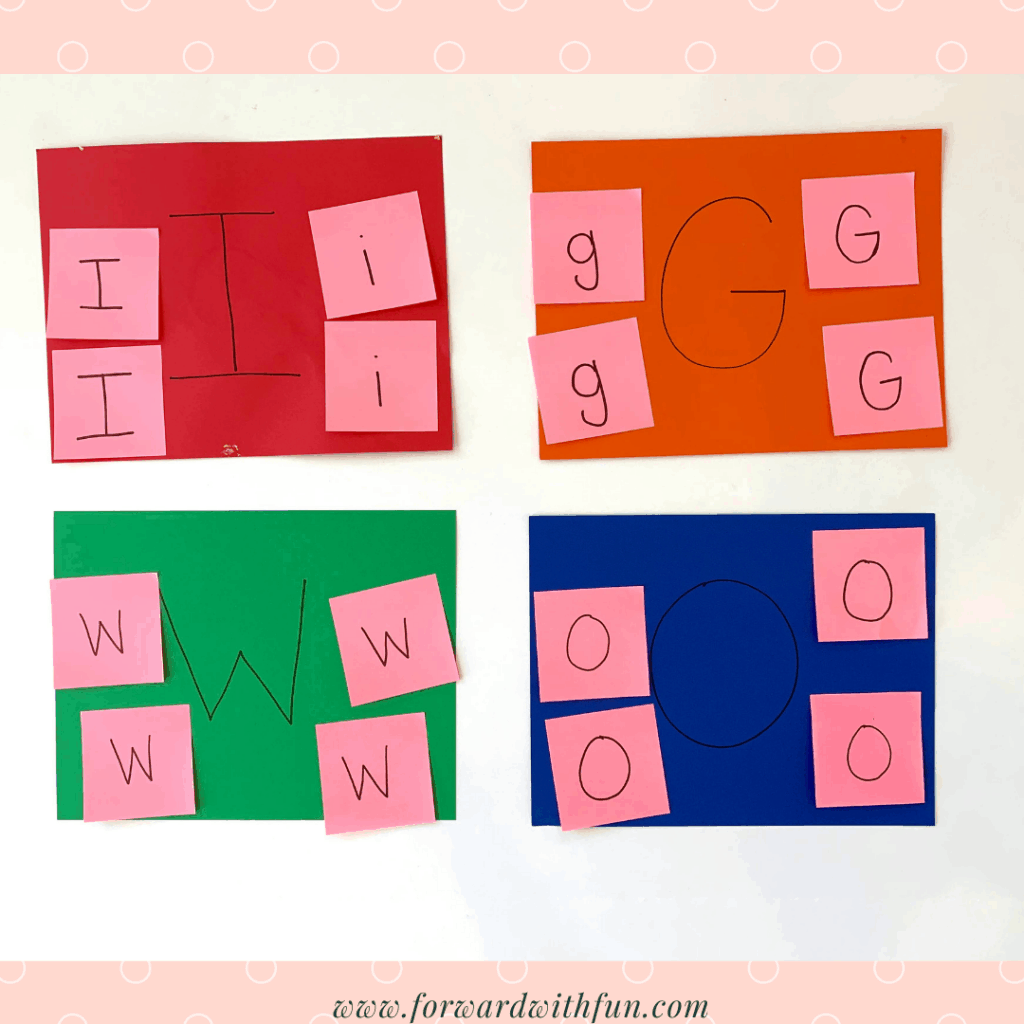
Surprise! Your favorite stuffed animal is going on a trip, but you need to pack some intriguing objects for it!
Place different letters in a bag. Take turns pulling out different letters and searching around the house that you can pack that begin with that letter sound.
Place the item with the letter and pack them for Bear's trip! Bon Voyage!
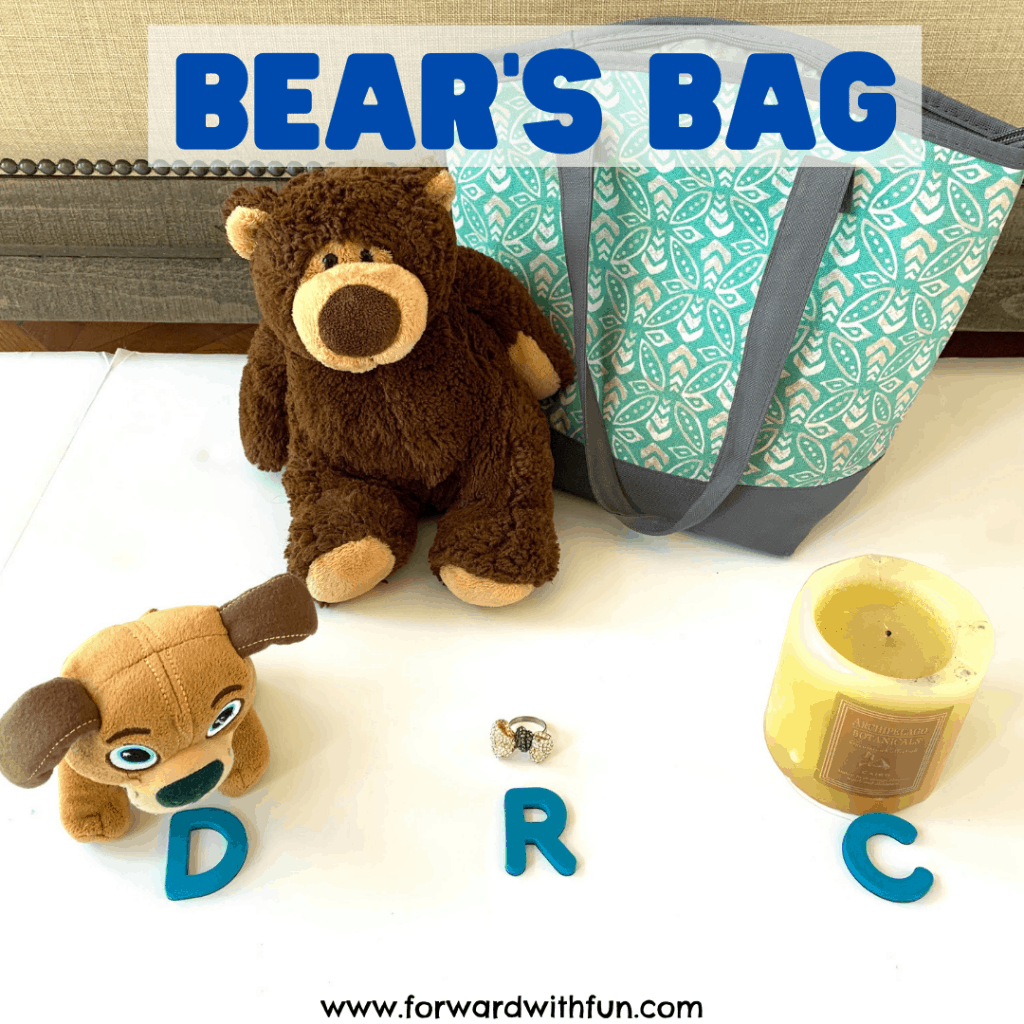
Learn letter sounds as Bear packs for a trip!
In this creative game, kids rescue their toys from under a laundry basket, unlocking the "code" by writing the letters that match the beginning sounds for each item. Genius!
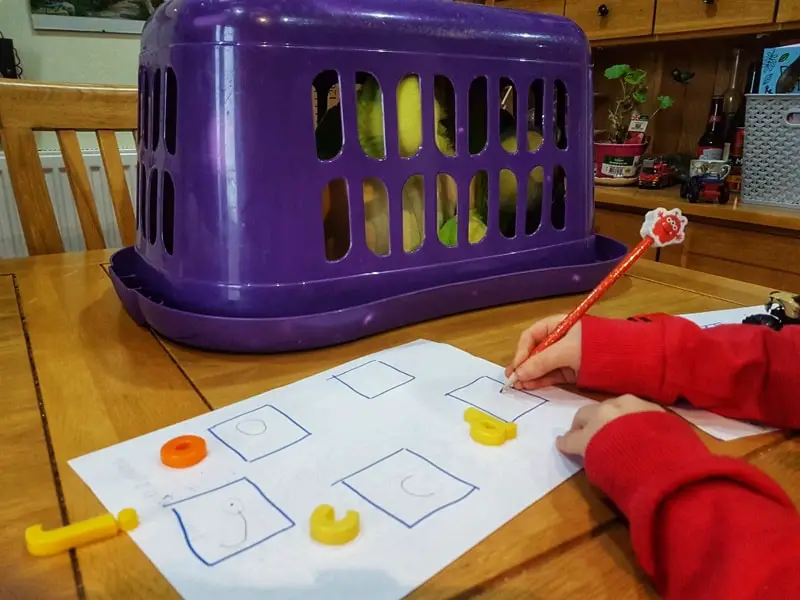
Got some blue painters tape? Create some zig zags for your child to traverse. Along the way, place some Post-it notes with letters they're learning on it.
Give your child a way they must cross the path: tip toe, jump, hop on one leg, walk, skip.
Each time they come to a letter, they need to stop, name it, and say it's letter sound.
Do your kids love trains and cars? They can even use their vehicles to traverse the zig zag path encountering letters as train stations or stop lights.
Take the fun outside with some chalk and play this silly, active hands-on learning game from The Imagination Tree. Draw letters on the ground and have children jump on the letters you name!
Grab those plastic Easter eggs and get ready for the most epic letter learning experience. Match the letters in the eggs to the mat, and we even added a secret ingredient! WOW!
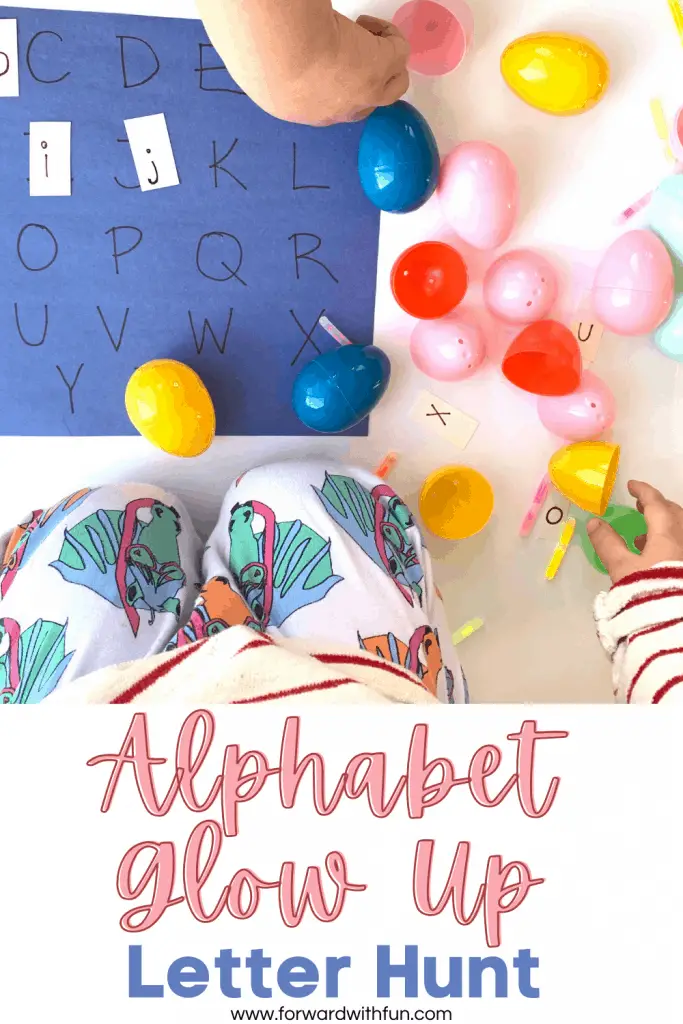
Practice matching letters with lowercase and capitals in this sensory soup bin that will keep even toddlers engaged!

The newest addition to this list is a complete set of alphabet playdough mats. This activity promotes learning letters in 4 different ways and includes sensory, tactile, fine motor, and reading/writing in every single mat.

Sensory Lowercase Letters Soup is a game we play where the kids pretend to make soup, but I sneak in some learning.
Learning is so much better when it's organically intertwined with kids' play because it's always fun and goes in new imaginative directions. Each time can be different!
*As an Amazon affiliate I may earn some pennies if you make a purchase through my links at no additional cost to you!
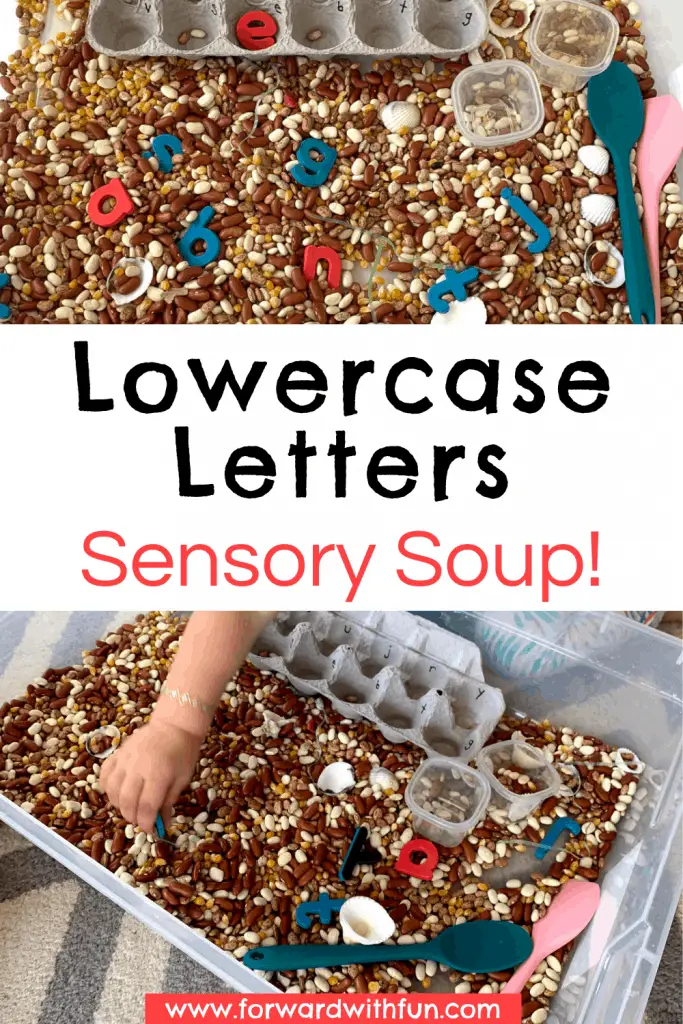
In Lowercase Letters Soup, the egg carton has letters written in each space and I only include those 12 letters in the soup. It is more successful and engaging when every letter they find has a home.
Kids sometimes resist doing an activity that is visually overwhelming or has too many steps. Keeping it to 12 lowercase letters makes the task doable for little kids. Also, the egg carton serves as a reminder of how many other letters are left. The egg carton can even be a math component: noticing there are 12 spots in the egg carton, how many the child has found already, and how many empty spots are left.
Another way to play with the letters, especially if you don't have an egg carton is to match them to letters on a baking tray, like in this great activity by No Time For Flashcards!
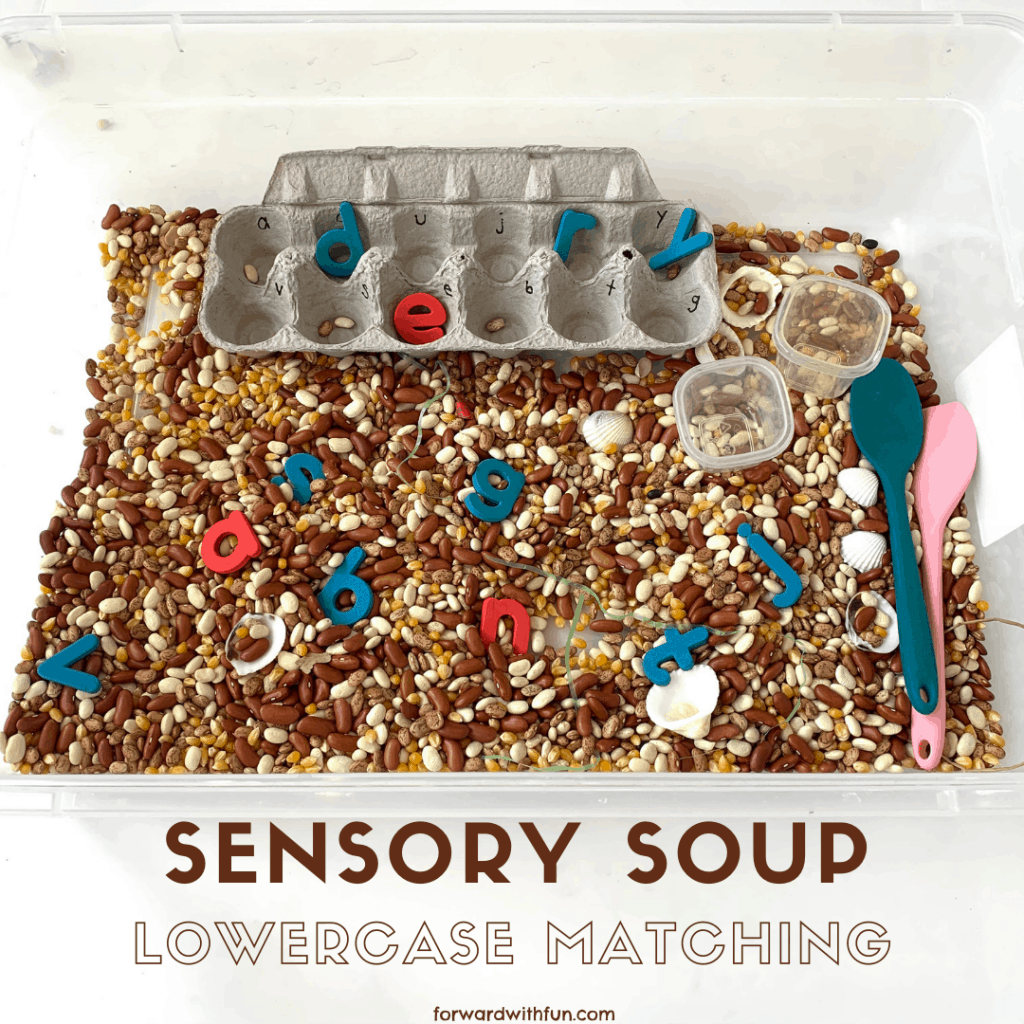
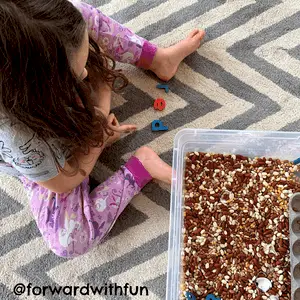
Make sure to include some vowels in your letters so that readers can find letters and try to make their own words.
Kids can make CVC words, that means Consonant-Vowel-Consonant words and then read them. Is that a real word? Or is it a nonsense words?
Ready for another activity using these lowercase letters? Try making CVC words in a muffin pan!
Searching for beginning sounds worksheets? You won't find those here. My goal in creating Forward with Fun is all about using play to create unique and memorable learning. Kids are more likely to engage and remember new skills when they are actively participating in experience, especially if it's a game! That's the secret to getting kids to LOVE learning!
Isolating beginning sounds is part of a set of early reading skills called phonemic awareness, the understanding that words are made up of sounds. When kids connect a specific sound to a letter name, that is called phonics.
*As an Amazon affiliate, I may get a small commission for purchases made through links in this post.
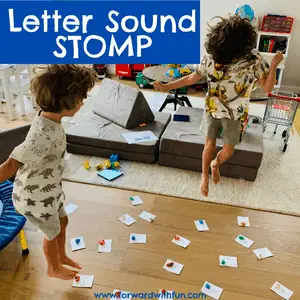

I'm sure the set-up laid out before your child is sure to inspire and delight them. To invite them to play share your Bag of Items.
As you pull items out, one at a time, ask your child whaat sound they hear at the beginning of the word, then find the matching letter on the ground. Once they find the letter that makes the beginning sound of that item they can jump, hop, or STOMP the Play-doh ball next to it!
Here is an example from our beginning sounds STOMP game.
Me: What's this? A hammer. What sound do you hear at the beginning of the word hammer?
Big Sis: /h/ /h/ Hammer.
Me: What letter makes the /h/ sound?
Big Sis: The H!
Me: Alright, let's stomp the H!
If your child doesn't know a letter sound, remind them. No big deal. We love to sing this phonics song we heard from a Leap Frog toy, "The B says /b/. The B says /b/. Every letter makes a sound. The B says /b/." If they don't know any letters, start with 2-3 objects. You can always simplify a game so they can still get important practice in with beginning sounds without knowing many letters names.
Before starting kindergarten, kids should be able to write their names and name some letters and sounds. (To grab your FREE kindergarten readiness checklist, check out this post.)
Mastery of all letter names and their corresponding sounds are expected at the end of kindergarten, according to USA Common Core standards:
CCSS.ELA-LITERACY.RF.K.1.D
Recognize and name all upper- and lowercase letters of the alphabet.
CCSS.ELA-LITERACY.RF.K.2.D
Isolate and pronounce the initial, medial vowel, and final sounds (phonemes) in three-phoneme (consonant-vowel-consonant, or CVC) words.1 (This does not include CVCs ending with /l/, /r/, or /x/.)
When your child starts showing interest in books and the words on the page, you can begin pointing out letters. This can be as early as 2 or even as late as 4 years old. All kids are different and show interest at different ages.
I can still remember the Easter activities we did in preschool from when I was 3 and 4. My family didn't celebrate Easter and I was completely enthralled by the magical activity of hunting for eggs all around the preschool campus.
As a teacher, I got my hands on those magical Easter Eggs, because they're full of so much hands-on learning potential for teaching lots of kindergarten and preschool skills like numbers, letters, and fine motor skills.
Our family celebrates Easter now and as a mother, I wanted to harness the magic of the Easter Egg for some incredible Easter activities for my preschoolers. So Glowing Alphabet Easter Eggs were born... um, I mean laid?
*As an Amazon affiliate, I may get a small commission for purchases made through links in this post.
On a piece of paper write the alphabet in all capital letters. Then on a separate sheet of paper, write the

Alphabet Easter Activity for Preschool
alphabet again. If you're doing this Easter activity with toddlers, I suggest only choosing maybe 5 letters to hide over and over again in the Easter eggs and keep them all capital. I would start with the letters of their name!
Since we were playing this Easter game with a preschooler and a toddler, I chose to put lowercase letters in the eggs, but you can use all capital letters, or like I suggested, limit the number of letters to be less overwhelming to your child.
Cut out small strips from the paper with the second alphabet written on it.
Then, comes the really satisfying part. Crack 26 mini glow sticks for what will soon be the coolest Easter activity your preschooler has ever seen.
In each egg, place one one letter and one glow stick.
Once you've got all the eggs ready and glowing, you're ready to hide them for your preschooler to find.
Once you've hidden the eggs in a dark room, make sure to clear the space of any tripping hazards. Always practice caution and even if it makes the glow a little less magical, it's best to keep a small source of light on so no one gets hurt!
Set expectations before you start. Where do you want the children to collect the eggs? Are they allowed to run? Should they wait before cracking them? It's all up to you, but I found that being specific with my expectations during the game allows everything to go much more smoothly.
Ready, set, Easter Eggs are a go!
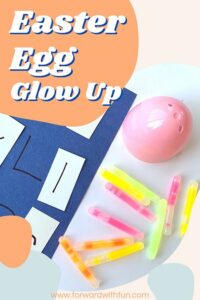
I'm always looking to embed learning in play. Think about it. If your children's first memories of learning letters are through playful, enchanting memories like this spectacular activity, they're going to have a positive association with letters and with learning as a whole.
I'm never pushing my kids into learning letters at an early age. In fact, they're the ones asking me to create learning activities for them, because while we are learning, we are playing together, connecting, creating, and making memories. This is our special Mama and Me time.
Letters are the forefront of this preschool easter activity but there is a lot of other learning that happens here too. Kids are:

Alphabet Fun with Easter Eggs
Pro tip: Including an imaginative play element will always increase engagement in the learning activity with preschoolers!
When all the eggs are found and my preschoolers were ready to match the letters, we used our imagination to "hatch" the baby letters from the eggs. The baby lowercase alphabet were eager to find their parent, the matching capital letter.
My kids were so enchanted by the soft glowing eggs, we must have played this 6 times more after the initial alphabet puzzle was completed.
Just because Easter Sunday only comes about once a year, doesn't mean the egg hunt only gets to happen once a year. Whether you're setting up this Easter activity for your preschoolers, toddlers, or kindergarteners it is sure to delight them.
Bonus points if you have a glow stick dance party afterwards!
